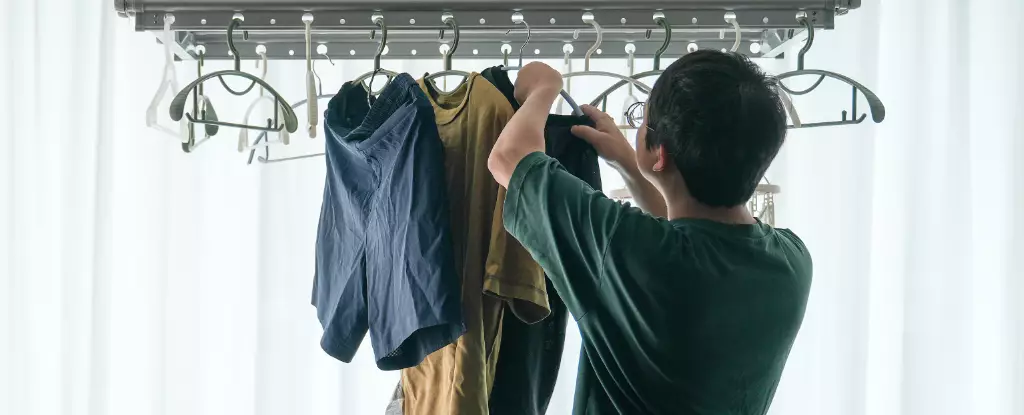As the winter months have swept in with fierce storms and biting cold, many homeowners have turned to indoor methods for drying their laundry. Yet, this shift from the traditional outdoor line to indoor drying can have unintended consequences for our health and wellbeing. The question arises: is the way we dry our clothes indoors really that significant?
Indoor Drying: Unseen Risks
While drying clothes indoors may seem harmless, it can create hazardous conditions that foster mold growth, especially when damp clothes are left in poorly ventilated spaces. Mold thrives in environments that are humid and cool, making indoor drying an ideal breeding ground. Typically, mold manifests as unsightly black or green patches on walls, often accompanied by a musty odor that permeates the household. Ignoring these indicators can lead to serious health consequences, from respiratory issues to more severe conditions, and in extreme cases, even death.
Mold is a diverse category of fungi that reproduce via spores. Under conditions of high humidity and favorable temperatures, these spores proliferate, which is why damp areas like bathrooms are often hotbeds for mold growth. Among the most problematic species found in homes are Penicillium and Aspergillus, both of which we unwittingly inhale every day. Thankfully, for the majority of us, our immune systems are adept at combating these spores, safeguarding our lungs from potential infections.
However, not everyone is so lucky. Individuals with compromised immune systems or pre-existing lung conditions face heightened risks when exposed to mold. Those battling asthma or similar diseases may find that mold spores exacerbate their symptoms, triggering severe inflammation in their airways. Such inflammation can not only make breathing more difficult but can lead to serious complications if mold spores invade the lung tissue directly.
Aspergillus, in particular, is notorious for causing infections among individuals with impaired lung function. In these cases, even a small influx of spores can trigger significant health problems, including invasive fungal infections that can be life-threatening. For asthmatic individuals, the connection between mold and increased respiratory distress cannot be overstated; it’s a double-edged sword where both mold exposure and asthma symptoms feed into one another.
Mold infections, once deemed manageable with antifungal medications, now present a rising challenge due to emerging drug resistance. Antifungal treatments such as azoles are effective at curbing fungal growth, but the rising rates of resistance to these drugs are alarming. Over time, fungi can adapt, rendering these treatments less effective and raising the stakes for individuals battling mold-related infections.
The issue of antifungal resistance isn’t confined to healthcare settings. Agricultural practices using the same antifungal agents can inadvertently catalyze environmental resilience among fungi. Perfectly positioned for survival, mold species can develop mechanisms to resist treatment before they even come into contact with human patients. The fallout from this phenomenon underscores the urgent need for comprehensive monitoring of environmental fungi, especially as climate change continues to exacerbate these conditions.
Tragically, adverse outcomes of mold exposure have not only remained hypothetical. Cases like the death of toddler Awaab Ishak in the UK demonstrate the grave realities of excessive mold and dampness inside the home. His passing led to Awaab’s Law, legislation mandating that landlords promptly address damp conditions to avert exposing tenants to hazardous mold levels.
Now, the question of how to combat indoor mold is paramount. Ensuring good ventilation is key. Investing in solutions such as dehumidifiers or heated drying racks can help mitigate dampness and decrease the likelihood of mold proliferation.
The significance of drying clothes indoors should not be trivialized. As we adapt our routines to winter’s demands, there’s a dire need to remain vigilant about the potential pitfalls of indoor drying. Maintaining a healthy ambiance at home is more than just a minor chore; it’s a fundamental aspect of safeguarding our health and well-being. As we continue to navigate a world full of unseen hazards, empowering ourselves with knowledge about mold can help us take proactive steps to ensure our homes remain safe havens, rather than breeding grounds for unwanted fungi.


Leave a Reply